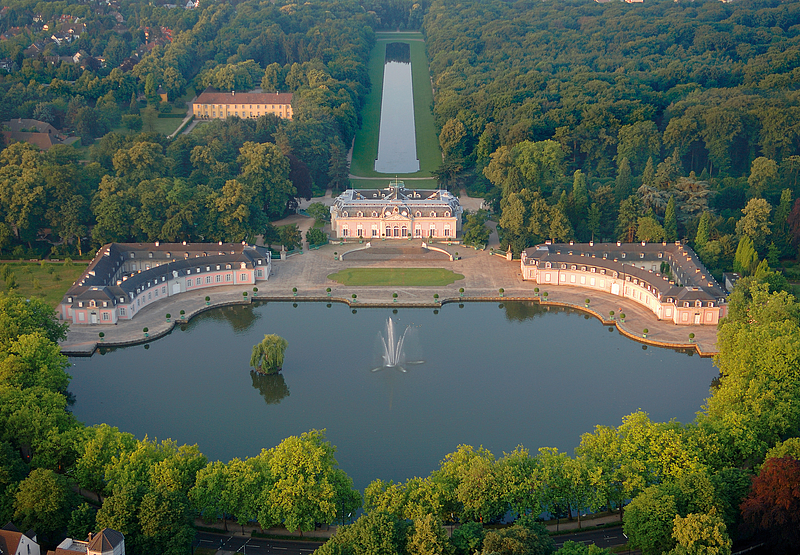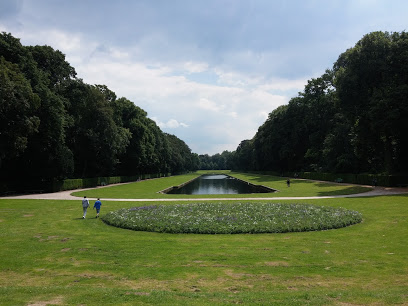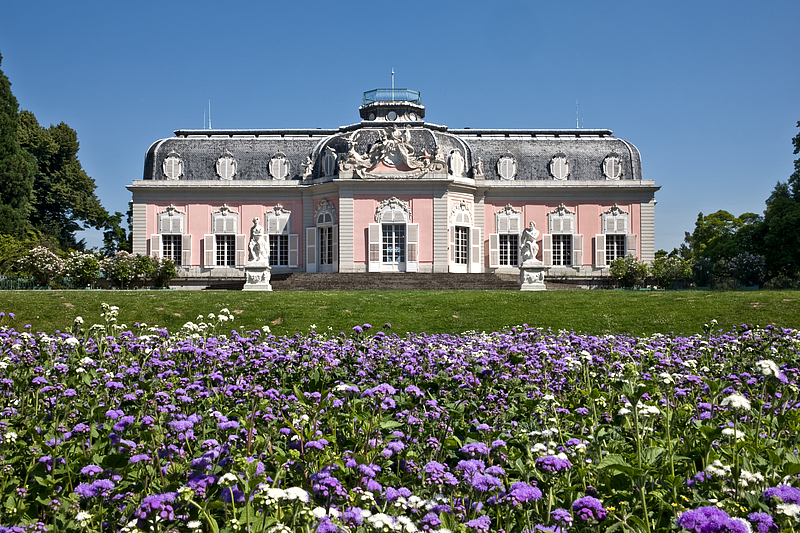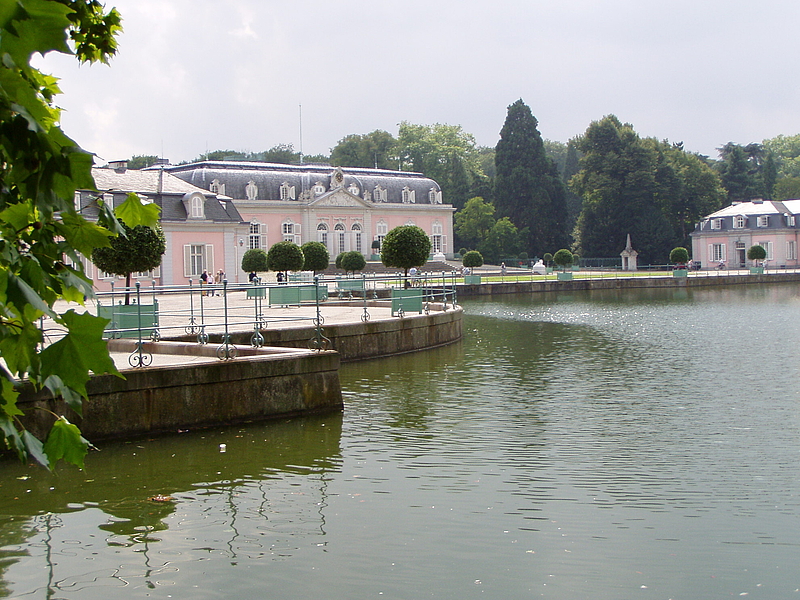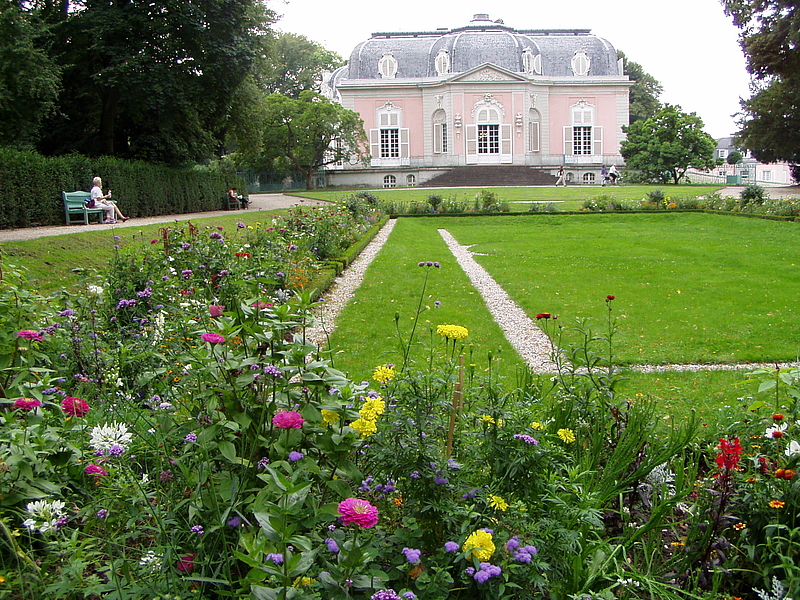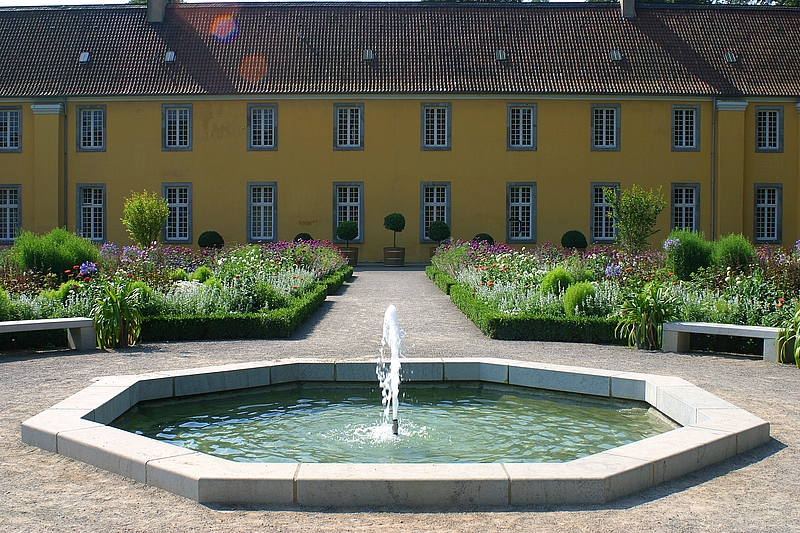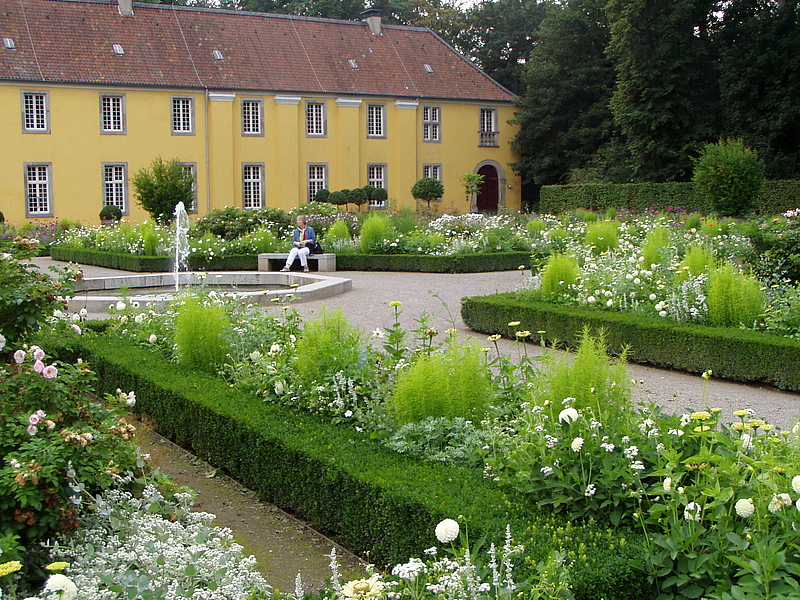The “Museum of European Garden Art” is situated in the east wing, and the “Museum of Natural History” in the west wing.
The palace park is formally designed according to the fashion of the time, and is divided into a total of three different gardens: the official garden, the private gardens and the bosquet. The Tiergarten (animal park) of the old water palace from the 17th century was redesigned into a geometrically subdivided hunting ground, and accounts for most of the approx. 63 hectares of parkland. Besides the “French Garden” and the orangery, the botanical “English Garden” – today simply called the Flower Garden – has a very romantic atmosphere.
The palace park is an oasis for trees, bushes and wildflowers and home to many indigenous animals. The oldest trees are the former pleached lime tree hedges, which through lack of cutting back, grew together to form the distinctive “lime tree avenues”, which are already 250 years old. The interesting, foreign tree species, particularly in the “English Garden”, were only planted after the redesign of the Elector’s private gardens at the beginning of the 19th century by Maximilian Friedrich Weyhe.

